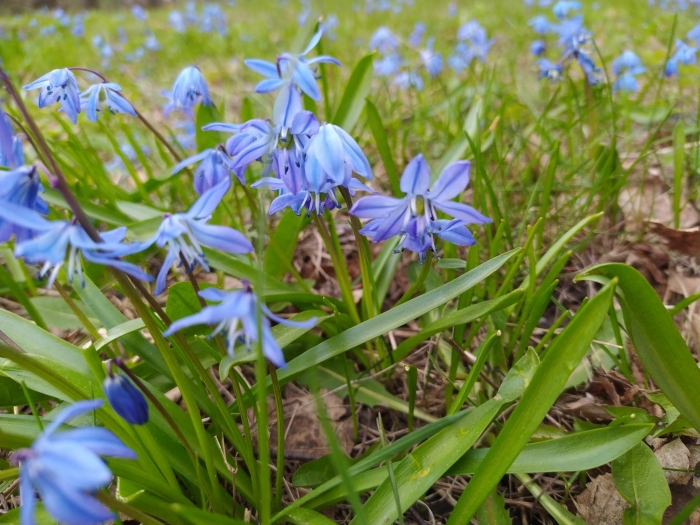Siberian Squill
(Scilla siberica)
Siberian Squill (Scilla siberica)
/
/

JS
CC BY 4.0
Image By:
JS
Recorded By:
Copyright:
CC BY 4.0
Copyright Notice:
Photo by: JS | License Type: CC BY 4.0 | License URL: http://creativecommons.org/licenses/by/4.0/ | Rights Holder: JS | Publisher: iNaturalist | Date Created: 2021-05-03T17:57:57-07:00 |




















































Estimated Native Range
Summary
Scilla siberica, commonly known as Siberian Squill, is a deciduous perennial herb native to a variety of habitats including mixed forests, grassy slopes, and alpine meadows in Southern and Eastern Europe, as well as the Middle East. It grows to 10–20 cm (4–8 in) tall and 5 cm (2 in) wide. This bulbous plant is known for its two to four strap-shaped leaves that emerge in early spring, coinciding with the appearance of its nodding, blue, bell-shaped flowers. The flowers are predominantly blue, although the variety Scilla siberica var. alba boasts white blooms. Post-flowering, the plant produces capsules that turn purple and split open to release small, dark brown seeds. Once the seeds mature, the foliage withers, and the plant enters dormancy until the following spring.
Siberian Squill is valued for its vibrant early spring flowers and its ability to naturalize, forming extensive colonies. It is often used in rock gardens, woodland plantings, and as a lawn specimen where it can create a ’blue carpet’ effect before the grass needs mowing. It has earned the Royal Horticultural Society’s Award of Garden Merit for its ornamental qualities. Siberian Squill thrives in full sun to part shade and prefers medium moisture, well-drained soils. While it is low-maintenance and easy to grow, it can become invasive outside its native range, particularly in the Midwestern United States, where it may outcompete native species. Gardeners should be cautious and check local guidelines before planting to prevent unwanted spread.CC BY-SA 4.0
Siberian Squill is valued for its vibrant early spring flowers and its ability to naturalize, forming extensive colonies. It is often used in rock gardens, woodland plantings, and as a lawn specimen where it can create a ’blue carpet’ effect before the grass needs mowing. It has earned the Royal Horticultural Society’s Award of Garden Merit for its ornamental qualities. Siberian Squill thrives in full sun to part shade and prefers medium moisture, well-drained soils. While it is low-maintenance and easy to grow, it can become invasive outside its native range, particularly in the Midwestern United States, where it may outcompete native species. Gardeners should be cautious and check local guidelines before planting to prevent unwanted spread.CC BY-SA 4.0
Plant Description
- Plant Type: Herb
- Height: 0.3-0.5 feet
- Width: 0.3-0.5 feet
- Growth Rate: Moderate
- Flower Color: Blue, White
- Flowering Season: Spring
- Leaf Retention: Deciduous
Growth Requirements
- Sun: Full Sun, Part Shade
- Water: Medium
- Drainage: Medium
Common Uses
Bee Garden, Border Plant, Butterfly Garden, Deer Resistant, Drought Tolerant, Fragrant, Groundcover, Low Maintenance, Potted Plant, Rock Garden, Street Planting
Natural Habitat
Mixed forests, grassy slopes, and alpine meadows in Southern and Eastern Europe, and the Middle East
Other Names
Common Names: Wood Squill
Scientific Names: , Scilla siberica, Scilla sibirica, Othocallis siberica,
GBIF Accepted Name: Scilla siberica Andrews